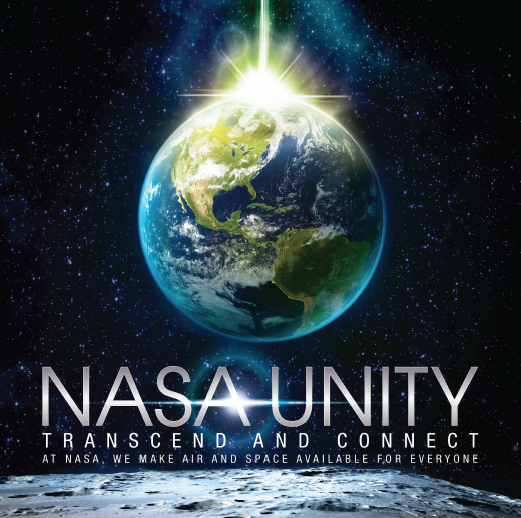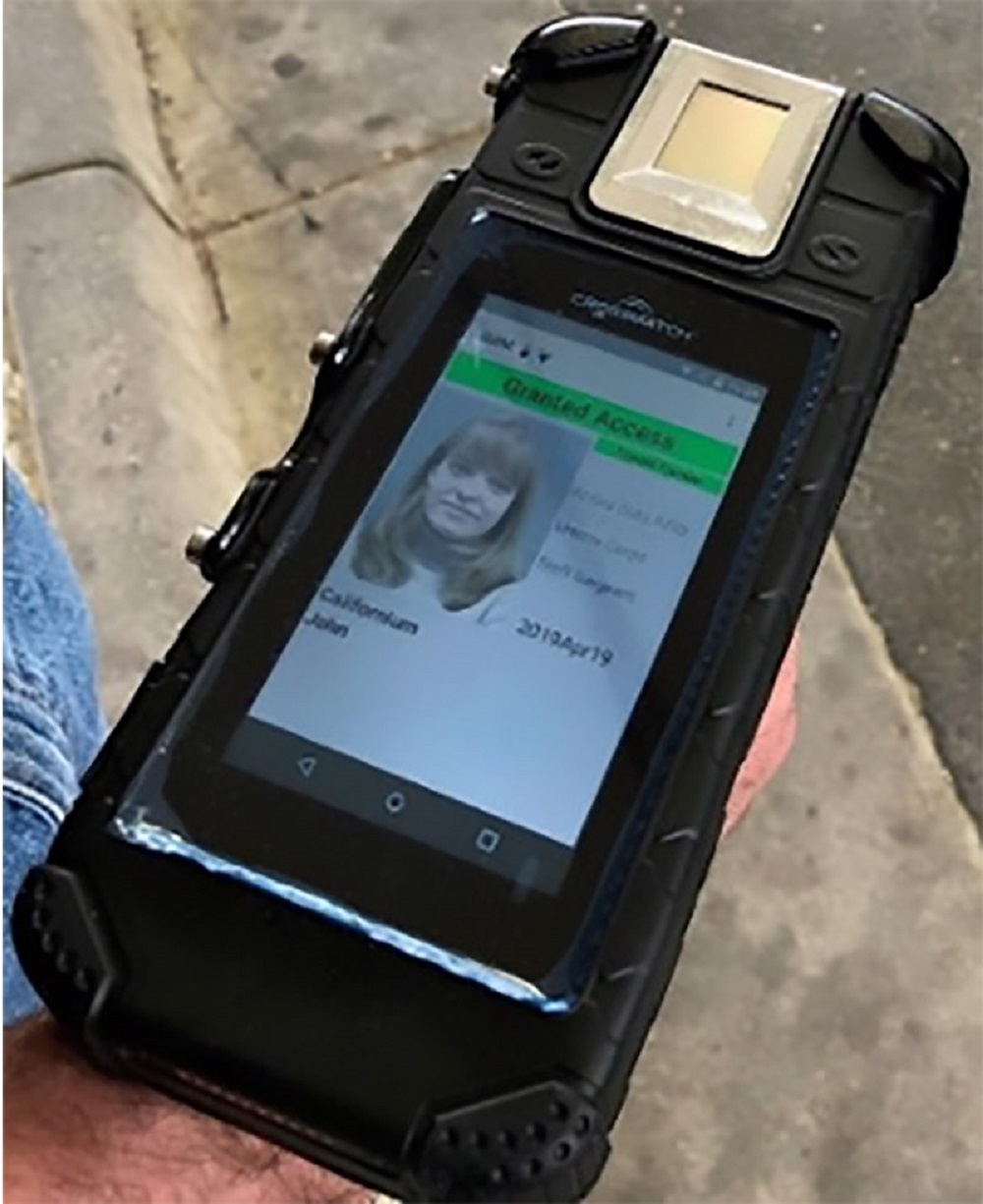In This Week’s Star
- Marshall Leaders to Host Live Virtual Town Hall Sept. 3
- Hurricane Laura Activates Backup Control Centers for International Space Station
- Rocket Science in 60 Seconds: What Are the SLS Boosters?
- Six Team Members Honored as a HEO HErO
- Marshall’s Offices of Diversity and Equal Opportunity, Human Resources Team Up to Unite Workforce
- Redstone Arsenal Gates on Track for Automated Entry System
- This Week in NASA History: First Flight of Discovery – Aug. 30, 1984
Marshall Leaders to Host Live Virtual Town Hall Sept. 3
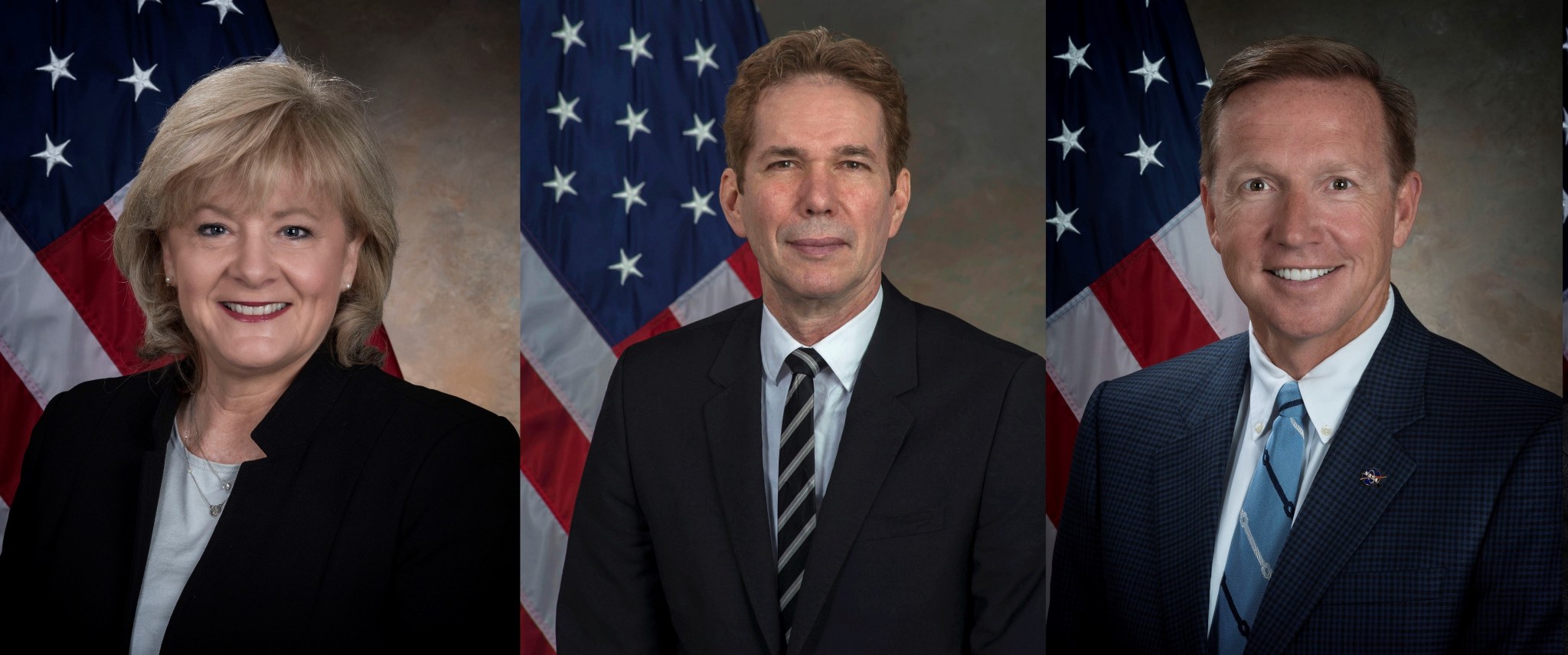
NASA’s Marshall Space Flight Center leaders – from left, Director Jody Singer; Deputy Director Paul McConnaughey, and Associate Director Steve Miley– will address team members during a live virtual town hall Sept. 3 at 1 p.m. They will share updates on Marshall missions – including the Space Launch System’s Flight Support Booster test Sept. 2 – and NASA COVID-19 safety protocols, and will take questions. Team members can join the meeting online using Chrome or Safari. Visit https://townhall.nasa.gov and follow the instructions to log in. Questions can be submitted or upvoted until the event begins, via a link posted on Inside Marshall. (NASA)
Hurricane Laura Activates Backup Control Centers for International Space Station
By Janet Anderson
Last week, as the threat of Hurricane Laura loomed over the Texas-Louisiana border, NASA backup control centers were activated in remote locations to continue support of International Space Station operations. Among those locations was the Huntsville Operations Support Center at NASA’s Marshall Space Flight Center.
The support center was activated Aug. 25 and served as the control center and communications hub for the space station. The Marshall team facilitated communication between Marshall and NASA’s Johnson Space Center flight control team that was relocated from Houston to Palestine, Texas.
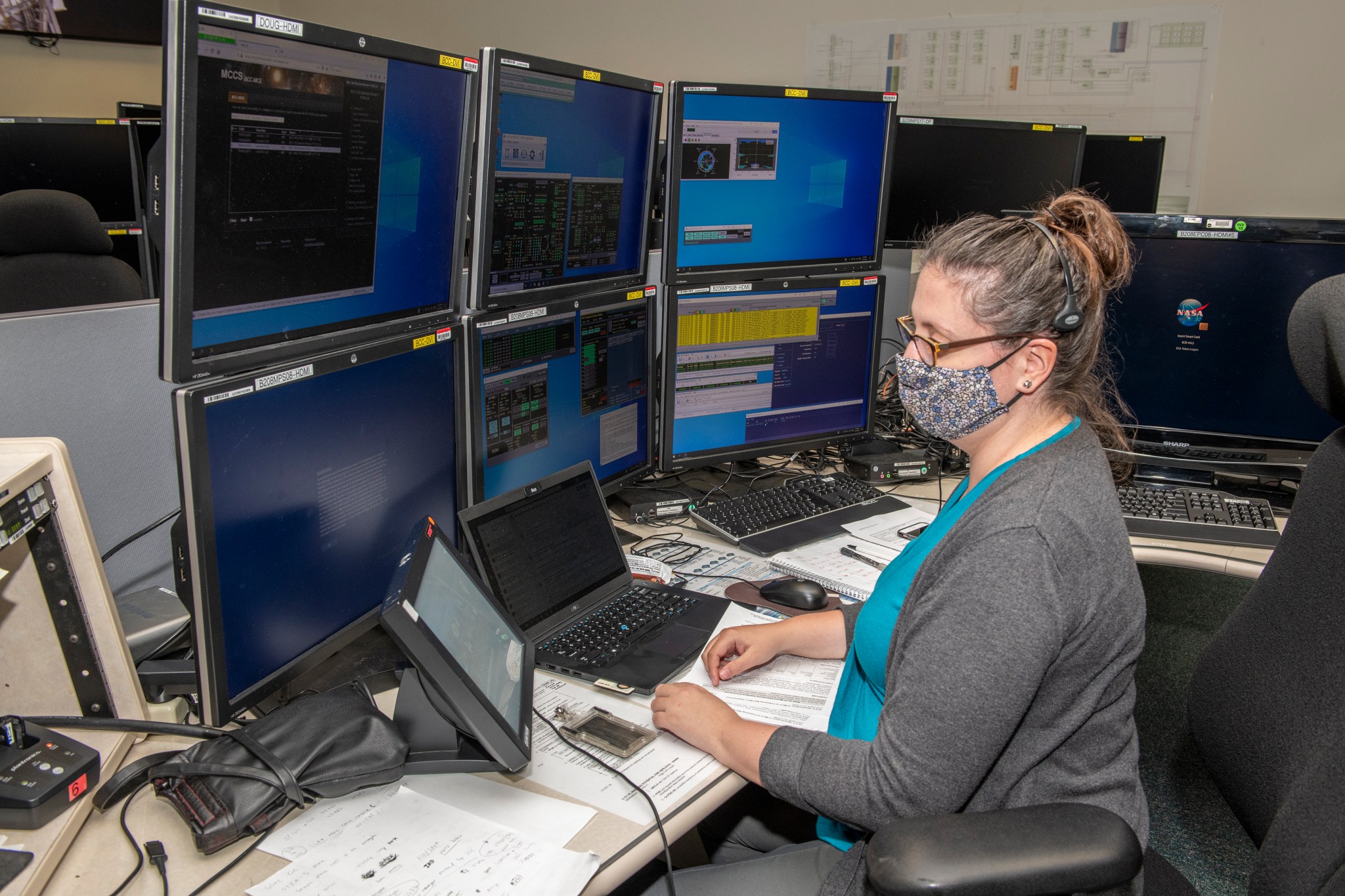
Flight controllers keep a constant watch on the station crew – monitoring their activities health, and safety, while also monitoring spacecraft systems to ensure operations proceed as planned.
There were 11 ground systems controllers on-site at Marshall who monitored the servers and connectivity to the space station. Ground system controllers gather data from the station, which the flight control team uses to make decisions on how to best proceed with operations.
Each year during certification, Johnson gives full systems control to Marshall to ensure operational connectivity. The annual checkout is conducted in preparation for hurricane season or other extenuating circumstances. The backup checkout concludes with Johnson mission controllers coming to the Huntsville Operations Support Center and performing a full activation with international partners.
“This backup process is planned and practiced for each year,” said Dwight Mosby, cost account manager for the Payload Operations Integration Center at Marshall. “This process is executed with no impact on critical station operations or the safety of the crew on board the space station.”
Due to COVID-19, the backup team performed this year’s checkout in a remote capacity.
Space station operations transitioned back to Johnson’s Mission Control Center on the morning of Aug. 28, since Hurricane Laura turned away from the Houston area.
“During an emergency, like Hurricane Laura, it is important to have confidence that all the backup systems will be operational,” said Jason Kelley, Backup Control Center Ops lead at Marshall. “The team here was ready and we supported station operations without skipping a beat.”
The Huntsville Operations Support Center became operational as a backup center Aug. 7, 2008, and just a month later the backup room was put to work as powerful and destructive Hurricane Ike made landfall in Texas. This triggered evacuations and the Johnson team made its way to the Backup Control Center adjacent to the Payload Operations Integration Center – temporarily becoming the prime location for space station operations.
The payload operations team at Marshall integrates research timelines and requirements, schedules ground and crew training, plans the orbital research schedule, and ensures missions and experiments are safely executed. During each six-month space station research expedition, controllers manage science payload resources aboard the station, handle science communications with the crew, and oversee all transmissions to and from the unique microgravity laboratory.
For almost 20 years, humans have lived and worked continuously aboard the International Space Station, advancing scientific knowledge and demonstrating new technologies, making research breakthroughs not possible on Earth that will enable long-duration human and robotic exploration into deep space. Under this unique international partnership, 240 people from 19 countries have visited the station, which has hosted more than 3,000 research investigations from researchers in 108 countries and areas.
Anderson is a public affairs officer in Marshall’s Office of Strategic Analysis & Communications.
Rocket Science in 60 Seconds: What Are the SLS Boosters?
Rocket Science in 60 Seconds gives an inside look at the work being done at NASA to explore deep space. NASA’s powerful Space Launch System rocket will launch the agency’s Artemis missions to the Moon. Its two, five-segment solid rocket boosters provide more than 75% of that thrust power during launch and flight. In this episode of Rocket Science in 60 Seconds, SLS booster subsystem manager Julia Khodabandeh explains how the boosters are designed, manufactured, and assembled to help power NASA’s next-generation Moon missions. For more information about SLS, visit here. (NASA)
Six Team Members Honored as a HEO HErO
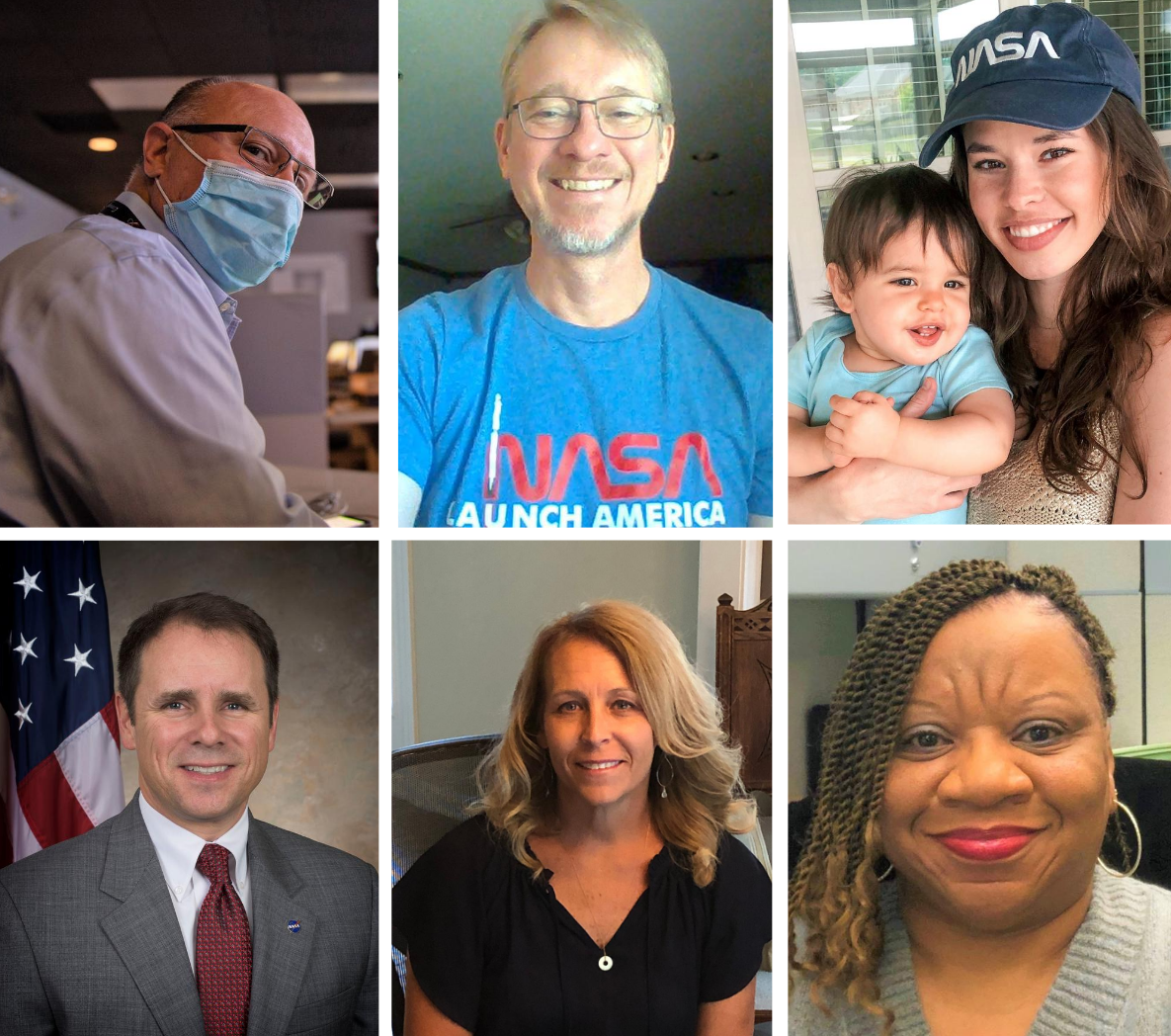
Clockwise from top left, Steve Gaddis, David Gwaltney, Lindsay Wiggins, Craig Cruzen, Donna Rogers, and Mary Howard are the latest team members from NASA’s Marshall Space Flight Center to be named a HEO HErO. Gaddis was instrumental in certifying the Falcon 9 rocket for successful launch of NASA’s SpaceX Demo-2 mission. Gwaltney supported closure of verifications associated with launch escapes reopened to address late-breaking findings by SpaceX and NASA. Wiggins helped to set up a remote control center environment for the Commercial Crew Program in support of SpaceX Demo-2 launch activities. Cruzen played a critical role in the effort to resume Payload Operations Integration Center cadre on-site training after Marshall went to Stage 4 of NASA’s coronavirus response framework. Rogers provided outstanding support as the budget analyst for the Exploration and Transportation Development Office within the Human Exploration Development & Operations Office at Marshall. Howard provides invaluable procurement support administering task orders in support of the Human Landing System and Space Launch System programs. Each week, NASA’s Human Exploration and Operations Mission Directorate recognizes HEO HErOes, team members from across the agency who have made vital contributions in their support of NASA’s mission to land the first woman and next man on the Moon by 2024. (NASA)
Marshall’s Offices of Diversity and Equal Opportunity, Human Resources Team Up to Unite Workforce
By Adam Farragut
With a global pandemic, nationwide civil and social unrest, and uncertainty in many other aspects of daily life, 2020 has been one of the most challenging years in recent memory. In response, NASA’s Marshall Space Flight Center’s Office of Diversity and Equal Opportunity and the Office of Human Resource have joined forces to bring unity, support, and understanding to the Marshall family.
In addition to ongoing Unity efforts, including special emphasis programs and leadership-led mentoring events, two centerwide virtual Unity dialogues were hosted this summer to promote conversations among team members about the current climate of civil and social unrest. These events provided a safe space for participants to share personal experiences through open dialogue. Featuring opening remarks from center leadership and participation from a collection of notable figures from around the center, these “Let’s Talk” events have drawn significant interest from the Marshall workforce and have served as a conduit for increased empathy, awareness, and teamwork.
“Our Unity events have been welcomed and appreciated,” Marshall Deputy Director Paul McConnaughey said. “Our community is strongest when we’re together. We’ll continue to do what’s necessary to facilitate that unity. We have one of the best teams in the world here at Marshall, and it’s imperative that every member knows they are valued.”
In addition to centerwide events, smaller virtual Unity forums are happening within many center organizations. These supervisor-led events have offered an intimate look into the experiences of immediate coworkers and have provided a more familiar and open forum for team members to express their thoughts and feelings on a variety of topics. To help employees manage and navigate these discussions and the current climate in general, the Office of Diversity and Equal Opportunity and the Office of Human Resources have created an online resource, which compiles a list of links and tools that can assist with learning and discussing racism and inequality.
“We all have a role in understanding the current environment and how it impacts each of us in the organization,” said Digna Carballosa, acting director of Marshall’s Office of Human Resources. “Every employee has the ability and the responsibility to improve our community by making sure team members feel welcomed, respected, connected and engaged.”
To help with that involvement and inclusion, Marshall’s Office of Diversity and Equal Opportunity has instituted the BRIDGE Champions initiative. Led by Deputy Director McConnaughey, BRIDGE – the Blueprint to Reinforce Inclusivity and Diversity to Gain Equity – was created to distribute information on equal opportunity, equity, diversity, and inclusiveness to the entire center, using a network of select Marshall senior-level employees. Marshall’s BRIDGE Champions are asked to participate and share information on equal employment opportunity challenges, strategies, and actions to help promote a diverse and supportive working environment.
“Whether through our Unity forums, both at the center and organizational level, meeting with the center’s Special Emphasis Program Advisory Working Groups, or the BRIDGE Champions, we want everyone at the center to know Marshall Space Flight Center takes the workforce’s issues and feelings seriously,” said Loucious Hires, director of the Office of Diversity and Equal Opportunity. “Every action, every day.”
For more information, visit the Marshall Office of Diversity and Equal Opportunity’s homepage.
Farragut, an ASRC Federal/Analytical Services employee, supports Marshall’s Office of Strategic Analysis & Communications.
Redstone Arsenal Gates on Track for Automated Entry System
By Jonathan Stinson
Redstone Arsenal gate guards continue to scan the facility’s new common access cards – smart identification cards soon to be ubiquitous among all workers employed by the arsenal’s numerous military, government, and contractor tenants – and build a database for the installation’s new entry system, according to Ron Thomas, director of operations for the U.S. Army Garrison.
Thomas recently announced that Redstone, which is home to NASA’s Marshall Space Flight Center, was installing a new automated installation entry system, known as AIE4.
The arsenal also is participating in a pilot program to implement radio-frequency identification lanes, which will allow incoming workers to be vetted and enter the installation through access control points in a more expedient manner.
Training and installation of the new system began in July. Phase 2 – building the new database of people with access to the installation – began July 27. Arsenal personnel, overseen by new Garrison Commander Col. Glenn Mellor, are working with Redstone tenants, such as Marshall and the Department of Justice, to incorporate their employees into the database.
“Marshall is working closely with the Garrison to support implementation of the new automated system, and will keep our team members updated on their progress and any new requirements for uninterrupted entry,” said Bill Marks, deputy director of Marshall’s Office of Center Operations. “For the time being, those Marshall team members cleared to conduct work on-site should proceed through the gates in normal fashion.”
The AIE4 system includes a number of upgrades to increase security and ease of access, including hand-held scanners linked to the new database and RFID lanes. The latter eventually will allow people to go through the gates, at about 5 mph, without stopping.
When the guards scan Department of Defense-issued identification cards, such as common access cards or retiree and dependent ID cards, the information associated with each card is loaded into the new database.
“We’re not at the point where we’re going to ask you to hand over your ID card,” Thomas said. “We’re still going to be very COVID-sensitive, but we will ask you to display it in such a manner that we have the ability to scan the bar code on your card.”
To be entered into the new database, nonfederal contractors and those persons who hold visitor badges must register in person at the Gate 9 Visitor Control Center, which is now able to process those badges. Current badges will be honored until they expire.
Garrison officials implemented the new process on Sept. 1 for garrison employees. Because the registration process for Marshall employees and contractors is still being worked, Marshall badges will continue to be honored for gate access at this time. NASA employees and contractors should continue through the gate as usual. When the process for registering in the new system is confirmed, Marshall leadership will inform team members of the new process, and of any changes to gate entry procedure.
All new systems should be fully operational by Oct. 1. More information will be shared as it becomes available via Inside Marshall and Team Redstone.
Stinson is the assistant editor of the Redstone Arsenal’s Redstone Rocket.
This Week in NASA History: First Flight of Discovery – Aug. 30, 1984
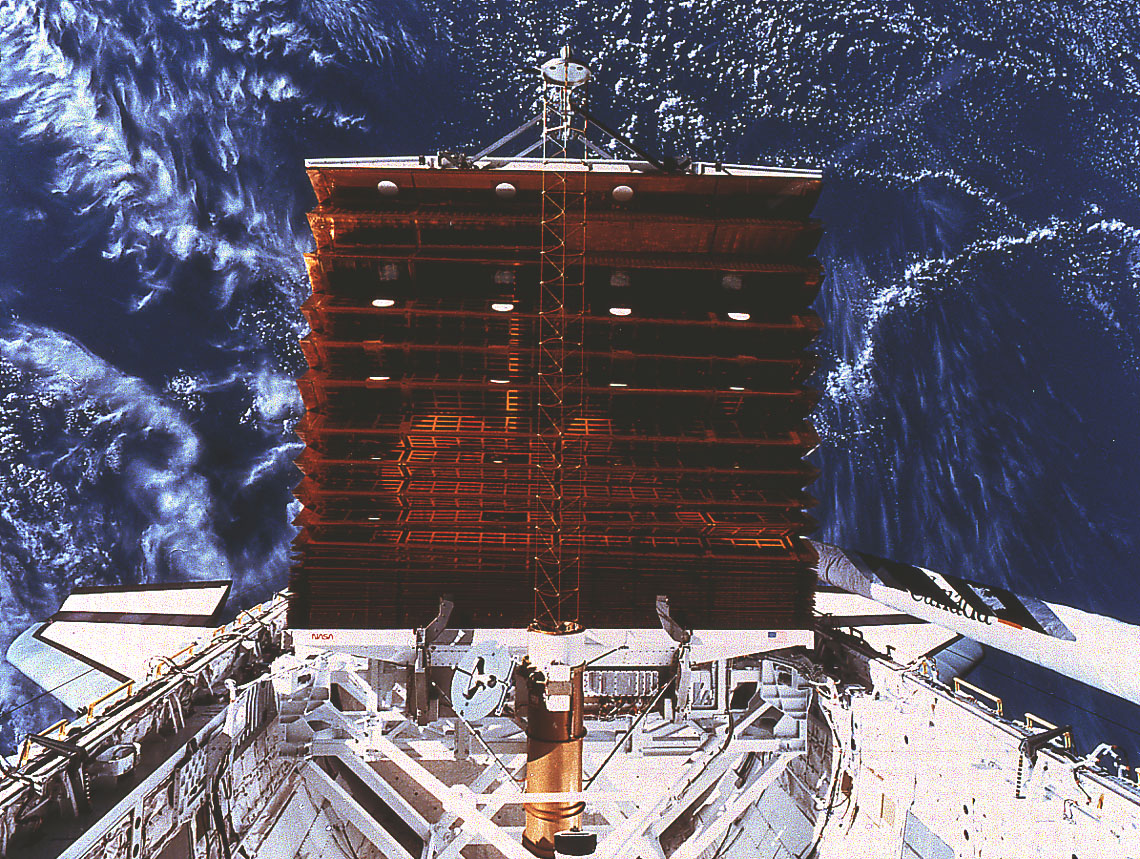
The NASA History Program is responsible for generating, disseminating, and preserving NASA’s remarkable history and providing a comprehensive understanding of the institutional, cultural, social, political, economic, technological, and scientific aspects of NASA’s activities in aeronautics and space. For more pictures like this one and to connect to NASA’s history, visit the Marshall History Program’s webpage. Credits: NASA
This week in 1984, space shuttle Discovery, mission STS-41D, launched from NASA’s Kennedy Space Center on its maiden voyage. During its six-day mission, Discovery deployed three satellites: the Satellite Business system SBS-D, Syncom IV-2, and Telstar. It also carried the 102-foot-tall Office of Application and Space Technology solar wing, which extended from the payload bay. It demonstrated large lightweight solar arrays for building large facilities in space. Here, the Solar Array Experiment panel deployment for the OAST-1 can be seen in Discovery’s cargo bay. The NASA History Program is responsible for generating, disseminating, and preserving NASA’s remarkable history and providing a comprehensive understanding of the institutional, cultural, social, political, economic, technological, and scientific aspects of NASA’s activities in aeronautics and space. For more pictures like this one and to connect to NASA’s history, visit the Marshall History Program’s webpage. (NASA)


























